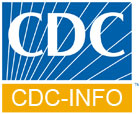Skip directly to the search box, site navigation, or content.
Division of Foodborne, Bacterial and Mycotic Diseases (DFBMD)
Aspergillosis (Aspergillus)
Clinical Features
In immunosuppressed hosts: invasive pulmonary infection, usually with fever, cough, and chest pain. May disseminate to other organs, including brain, skin and bone. In immunocompetent hosts: localized pulmonary infection in persons with underlying lung disease. Also causes allergic sinusitis and allergic bronchopulmonary disease.
Etiologic Agent
Aspergillus fumigatus, A. flavus. Less commonly A. terreus, A. nidulans, A. niger.
Reservoir
Ubiquitous in the environment. Found in soil, decomposing plant matter, household dust, building materials, ornamental plants, items of food, and water.
Incidence
Not reportable. Population-based data available for San Francisco suggest a rate of 1-2 per 100,000 per year.
Sequelae
If severe granulocytopenia persists, mortality rate can be very high (up to 100% in patients with cerebral abscesses). Patient outcome depends on resolution of granulocytopenia and early institution of effective antifungal drug therapy.
Transmission
Inhalation of airborne conidia (spores). Nosocomial infection may be associated with dust exposure during building renovation or construction. Occasional outbreaks of cutaneous infection traced to contaminated biomedical devices.
Risk Groups
Persons with severe, prolonged granulocytopenia, persons with hematologic malignancies, hematopoietic stem cell and solid organ transplant recipients, and patients on high-dose corticosteroids and/or other immunosuppressive therapies. Rarely, persons with HIV infection.
Surveillance
No national surveillance exists. Active surveillance is being conducted among hematopoietic stem cell and solid organ transplant recipients in selected U.S. hospitals.
Challenges
Identifying modifiable risk factors for disease in immunocompromised persons. Improving understanding of sources and routes of transmission from the environment. Developing sensitive and specific methods for earlier diagnosis.
Opportunities
Development of rapid antigenemia and antigenuria tests and molecular probes may facilitate earlier clinical diagnosis. Availability of improved molecular typing methods may assist in epidemiologic studies.
Content Source: National Center for Zoonotic, Vector-Borne, and Enteric Diseases (ZVED)
Program Contents
Contact Information

